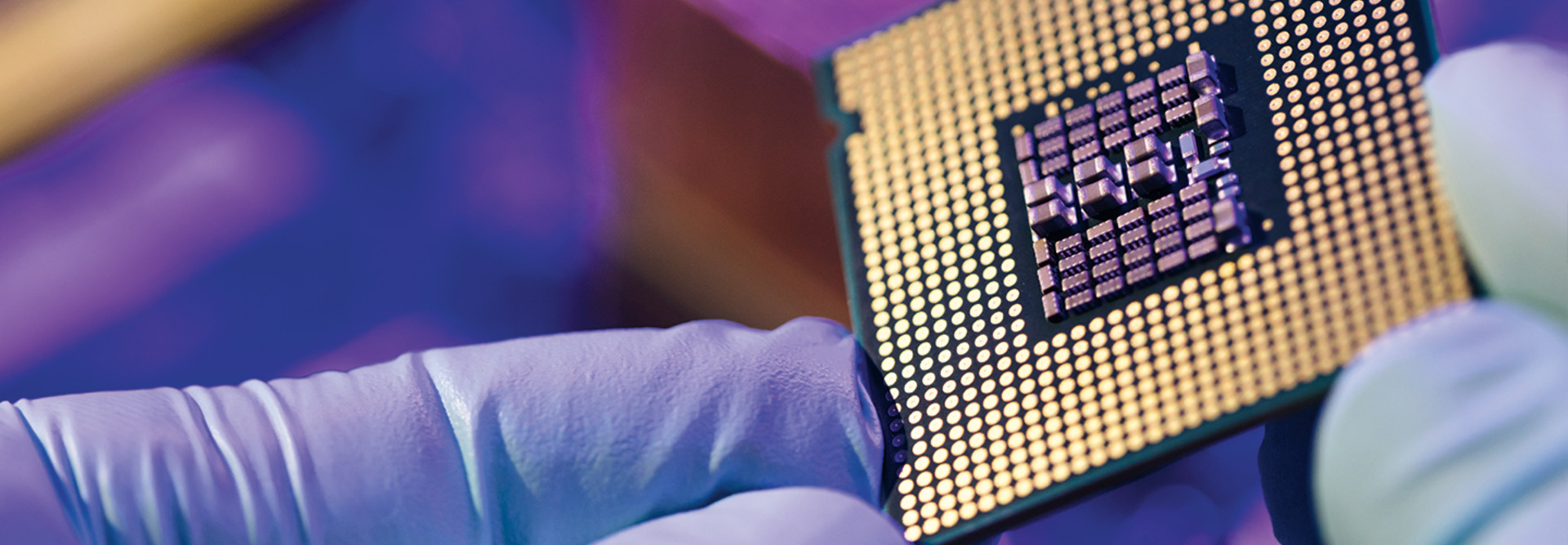When it comes to processing power, it can be complicated to figure out what, exactly, meets the needs of your employees.
Changes that may seem subtle on the surface can change the experience you have with a computing device — and that can shift the mode of a professional use case to something that’s still plenty capable, if perhaps not quite so high-end.
That’s the story of the Intel Core i5 and Core i7: two processor lines that, in desktops and laptops alike, give users ample choice in how they compute. That said, you might wonder what makes them different. Read on to learn a little more about these processors and how they fit into Intel’s broader lineup.
RELATED: Find out how the right hardware can attract, retain, and engage talent.
History of the Intel Core i5 and Core i7
The Core i5 and Core i7 represent the two most popular processors in the Intel Core processor line. Each has come a long way in the nearly 15 years they’ve been on the market.
The Intel Core series launched in 2008 with a series of Core i7 processors that utilized the company’s Nehalem microarchitecture. Each of the three processors — the i7-920, the i7-940, and the i7-965 Extreme Edition — launched with four cores and a 130-watt thermal design point (TDP), allowing for a level of high performance. A TechRadar review at the time noted that the i7-920, despite being an entry-level model, was actually faster than Intel’s previous high-end offerings.
The Core i5-750, the first desktop-class i5 processor, lowered the TDP to 95 watts in its initial version — meaning it could throw less energy at a given processing task — but gave users access to four cores.
The processor lines have evolved significantly in the years since, with the first mobile-targeted i7 processors appearing in the fall of 2009 and the mobile-targeted i5 processors appearing at the start of 2010. Historically, mobile processors (which are also utilized in small-form-factor desktop systems such as Intel’s Next Unit of Computing, or NUC, line) tend to utilize lower power wattage because balancing performance and battery life is a main goal.
Intel is on its 12th generation of Core processors today, with the latest models leveraging a mix of performance and efficiency cores, an approach that has gained popularity in the technology world thanks to ARM-based processors like those used in smartphones and in the recent Apple Silicon Macs.
Shalini Singh, a mobile product marketing manager for Intel, notes that one of the key differences between the 12th generation and prior versions is the addition of Intel Thread Director, a technology that can automatically detect background tasks and put them on lower-powered cores, “allowing the most responsive experience for the user with the performance cores.”
“Based on the performance of hybrid architecture, our processors have been optimized for performance first while offering optimal battery life,” Singh says.
Intel Core Processor Series: The Different Types of Intel Processors
Modern Intel processors distinguish themselves through the inclusion of distinct processor cores as well as the amount of power those cores can chew through. Higher-end options, such as the Core i7 and the Core i9, have more cores; lower end options have fewer cores, but they excel with single-core performance.
The Core i5 and Core i7 are not the only processors that Intel sells. For example, the company’s Pentium and Celeron lines offer less powerful processors, while the Xeon line offers server-grade processors that can also be used in high-end workstations.
Among Intel’s Core processors:
- Core i3 represents the low end of Intel’s Core line of processors and makes up for its lower core count with strong single-core performance.
- Core i5 is effectively the mainstream option and generally balances performance and flexibility in a more cost-effective way.
- Core i7 was for years the top-end model available in laptop and desktop form factors, but has ceded that position to the Core i9; it remains a powerhouse, especially in products such as the Intel Ultrabook, which must solidly balance efficiency and performance.
- Core i9, with more cores and processing power, is the top of the Core line, and in Intel machines that use it, “the performance, responsiveness and overall experience scales up,” Singh explains.
Many of these processors contain an integrated graphics processing unit, which can support a degree of demanding graphical work, though dedicated GPUs may make more sense based on the use case.
Click the banner below to unlock exclusive cloud content when you become an Insider.
i5 vs i7: What’s the Difference?
For the most part, the primary difference between the i5 and i7 comes down to the level of power that the processors can put out, with plugged-in desktop machines naturally able to consume more power.
For example, the i7-12700K and i5-12600K, two of the most powerful processors Intel sells, each has a TDP of 125 watts. By comparison, a P-series chip tops out at 25 watts , while a U-series mobile processor tops out at 15 watts.
When performance and upgrades are top concerns — as they might be in a recording studio, for example, where people use a lot of specialized equipment — it may make more sense to use a desktop form factor. But if your employees are generally remote or travel frequently with their devices, the equation changes. They may simply need a device that will get them through a long flight or a day of meetings with no power outlets in sight. In that case, a laptop with a power-sipping mobile chip might make more sense.
However, if you need to travel and you need a lot of performance, Intel has a pair of high-end processor families — the H series and the HX series — that aim to balance the needs of multithreaded workloads on the go. The just-announced HX line, which includes two i5 processors and three i7 processors, has a TDP of 55 watts, which might come in handy for those who need more performance than battery life.
READ MORE: Learn how startups can mitigate the operational costs of IT hardware.
Is an Intel Core i5 All You Really Need?
When it comes to choosing between Intel Core i5 or Core i7, it’s worth considering the specific use case.
Are you equipping your staff for light productivity work? Do they occasionally dip into areas where more technical capabilities are needed, like creative or scientific work? Or are they doing heavy-duty work, like compiling code, editing video or rendering graphics?
“In general, performance, responsiveness and overall system experience increase as you move up the processor brand stack from Core i5 to Core i7,” Singh says. “Core i5 provides exceptional performance for everyday productivity use cases for a typical business laptop user.”
Most modern Intel CPUs can capably handle daily Zoom videoconferences, but what if the use case is Adobe Premiere?
For IT teams thinking about future hardware needs, these types of questions highlight the delicate balance between cost, power consumption and capabilities that many organizations must consider as they upgrade their company’s offerings.
If you need help navigating this maze for your own company’s hardware investments, getting some insights from an outside eye, like CDW Amplified™ services, could help you manage what could be a complicated set of decisions.
It might be only one step up in processor type, but that could be more complex than it sounds, based on your organization’s needs.











